Looking for some super cool Galapagos tortoise facts? You’ve got them; enjoy!

Table of Contents
The Friendly Giant
The Galapagos tortoise is quite the sight; tall, scaly, and nearly pre-historic, it makes an entrance. They are the biggest tortoises in the world and among the longest-lived.
Many people think that tortoise equals slow. However, the Galapagos tortoise went a lot faster than my cartoon-influenced 12-year-old self expected.
So while you certainly won’t catch them winning any sprints, they can go a lot faster than you might expect.
Galapagos Giant Tortoises by the Numbers
- Latin name: Chelonoidis nigra
- Length: Males may grow up to 6 ft (1.8 m) long and 4-5 ft (1.2 – 1.5 m) wide. Females are generally smaller, even half the size of males.
- Weight: Males can weigh nearly 600 lb (272 kg), although they normally stay around 500 lb (227 kg). Females can weigh up to 300 lb (136 kg) but average 250 lb (113 kg).
- Color: Galapagos tortoises range in color from a dark blackish shell to a dusty brown head, neck, and legs, with some of the scales being a darker brown. Their faces may frequently be stained green from all the grass they’ve been munching.
- Cool feature: Galapagos tortoises live well over 100 years in the wild. The oldest recorded is said to have lived at least 170 years.
As you’ve probably figured out by now, Galapagos tortoises live in the Galapagos Islands, off the coast of Ecuador.
13 Awesome Galapagos Tortoise Facts
1. Galapagos is named after its tortoises.
The word “Galapagos” comes from the old Spanish word “galapago,” which the original explorers used to mean “saddle” due to the shape of the tortoise’s shells.
When the islands were first discovered, people used to ride the saddleback tortoises; however, this is now illegal because it’s very bad for the tortoise.
2. Unlike cartoons, tortoises are stuck in their shells.
Their shell is actually attached to their ribs, so unless you’re into zombie tortoises, they are staying put!
3. The Galapagos tortoise shell is not solid.
Although these animals are very heavy, their shell is not the biggest culprit. The shell is made up of honeycomb shaped air chambers.
While this lightens the load significantly, the tortoise’s ability to lift itself is still a sight to behold. I know I’m certainly not as strong as these gentle giants, but I couldn’t lift up that shell.
Then again, a skinny, muscle-less, twelve-year-old girl wasn’t meant to lift a giant tortoise shell.
Some scientists believe that some tortoises may have gotten dumped off of boats near Wolf Volcano by whalers.
And then arrived on Isabela Island in Galapagos by floating on their backs with their long necks pointed straight up. Good for them; they didn’t become tortoise meat!
4. Galapagos tortoises are ferocious fighters…?
A Galapagos tortoise “fight” is quite a spectacle. The males will glare at each other, open their mouths, raise their heads as high as tortoise-ly possible, and then… that’s it. Highest head wins! The loser will suck his head in and slink away.
A much smaller male with a longer neck may end up beating a very large male if he can raise his head high enough. If only men were as smart as tortoises the world would be a much more peaceful (and tall) place.
5. Why do Galapagos tortoises hiss?
The short answer is, they don’t. The impressive hissing noise occurs when they pull their heads back into their shells.
They release the air in their lungs so they can have room for their heads, and this is what makes the hissing noise.
6. “Honey, what’s for dinner?”
Galapagos tortoises can go for a whole year without food or water. How do they do it?
Their bodies slowly start breaking down their body fat, which produces water as a byproduct, allowing them to survive. How crazy is that!
 7. Scales and scoots!
7. Scales and scoots!
The skirt-like edges (scoots) on the shell of the Galapagos tortoise will wear down as the tortoise gets older, and the scales on the fronts of their legs will do the same.
The young tortoises have scales on their legs to protect their face and neck when they suck themselves into their shells.
8. An adult Galapagos tortoise has no natural predator.
While baby tortoises have lots of threats (see fact #13), the adult Galapagos tortoise has almost nothing to worry about.
Which is good, because their protective scales and scoots wear down as they get older.
9. Weird feeding habits of the Galapagos tortoises.
Galapagos tortoises are herbivores and enjoy eating grass, fruit, leaves, flowers, cactus, and prickly pear – a fruit that grows on cactuses.
More reading: 11 Far Out Facts About the Blue-Footed Booby
10. Galapagos tortoises begin their lives in a pee-soaked sand hole.
The mother digs a hole in the sand and promptly proceeds to pee all over it. Thanks a lot MOM. This is done so that the sand won’t collapse on the eggs. She then buries her eggs 12 inches (30 cm) deep, and then covers them with sand.
Galapagos tortoises lay up to 16 eggs. Yikes! I’m glad I don’t have 16 siblings. The eggs are hard-shelled and about as big as tennis balls.
11. Warm sand = more females.
The temperature determines the gender of the hatchlings! If it’s warmer, more females will hatch.
Of course, the reverse is true: cooler sand temperature means more males. When I first heard about this, I couldn’t believe it.
12. Baby Galapagos tortoises have to dig their way out of the nest.
This process can take up to a month. To survive, they feed on their yolk sac (which can last up to seven months).
Imagine if we had to dig our way out of our… hang on, that’s just getting weird.
13. Galapagos tortoises are vulnerable
These beautiful animals have been classed as “likely to become endangered.” When Charles Darwin visited the islands in 1835 there were 15 different types of giant tortoises in the Galapagos.
Now, there are only 11 kinds, and some of these are on the brink of extinction.
Through out the 17th to the 19th centuries, they were hunted for food, with possibly 100,000 being killed. Now, introduced pigs, dogs, goats, cats, cattle, and rats threaten their eggs and eat their food.
Despite the positive effects of captive breeding at the Charles Darwin Research Station in the Galapagos, the help of some zoos, like the San Diego Zoo (which has the largest population of captive Galapagos giant tortoises), there are only about 15,000 Galapagos tortoises left in the wild.
Gentle Giants of the Galapagos
Well, those are my 13 Galapagos tortoise facts, I hope you liked them! Numbers 6, 11, and 12 were new and particularly interesting to me. Which was your favorite?
Do you have any Galapagos giant tortoise facts to add? Please share them in the comments!
Check out these 13 facts about Galapagos marine iguanas
Drew Haines is an animal enthusiast and travel writer. She loves to share her passion through her writing.
She graduated high school at sixteen and started her own business, Everywhere Wild Media. And she runs Everywhere Wild and JustBirding. She also guest blogs on Storyteller.Travel
She lived in Ecuador for 6 years and explored the Galapagos Islands. Currently based in N.S., Canada.

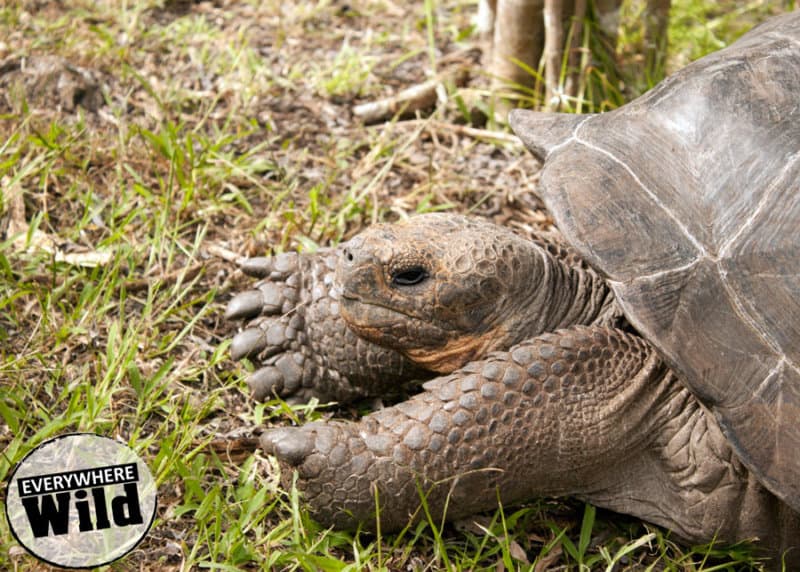
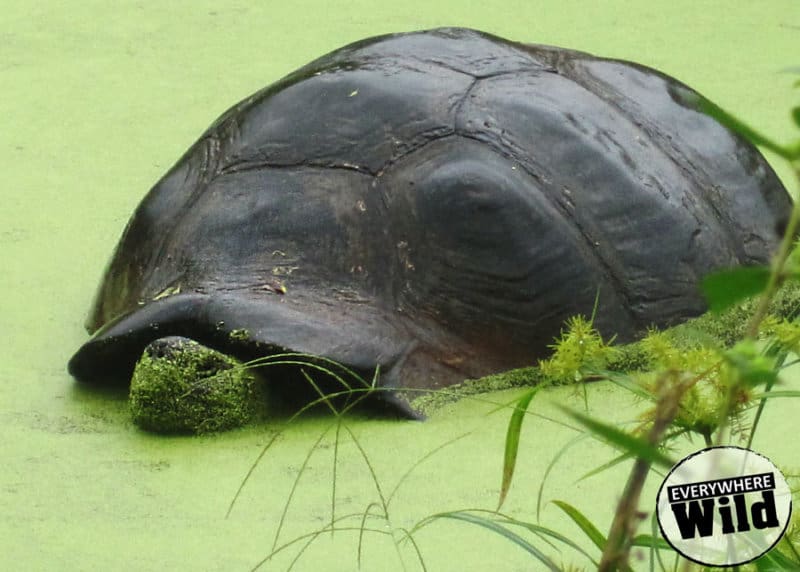
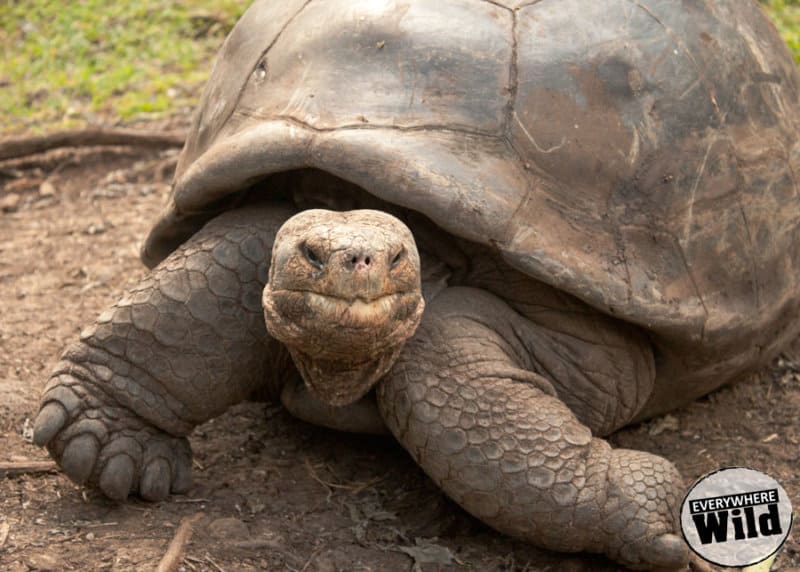
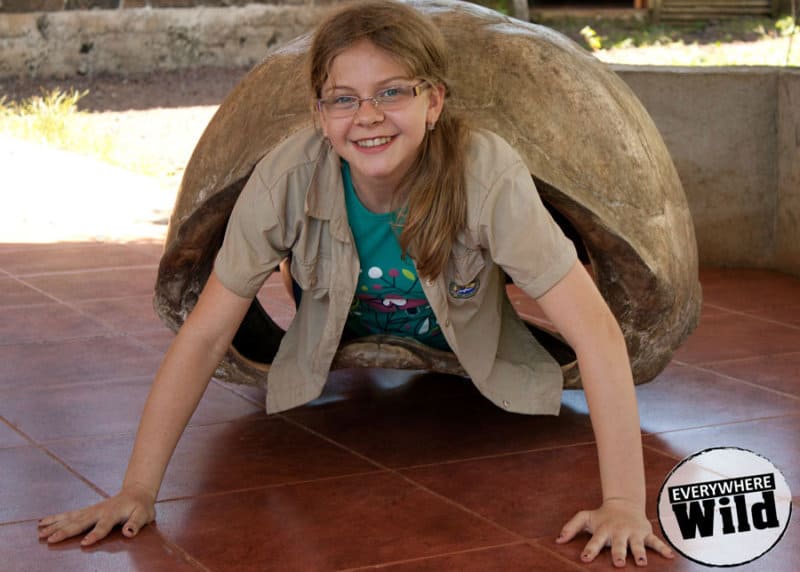
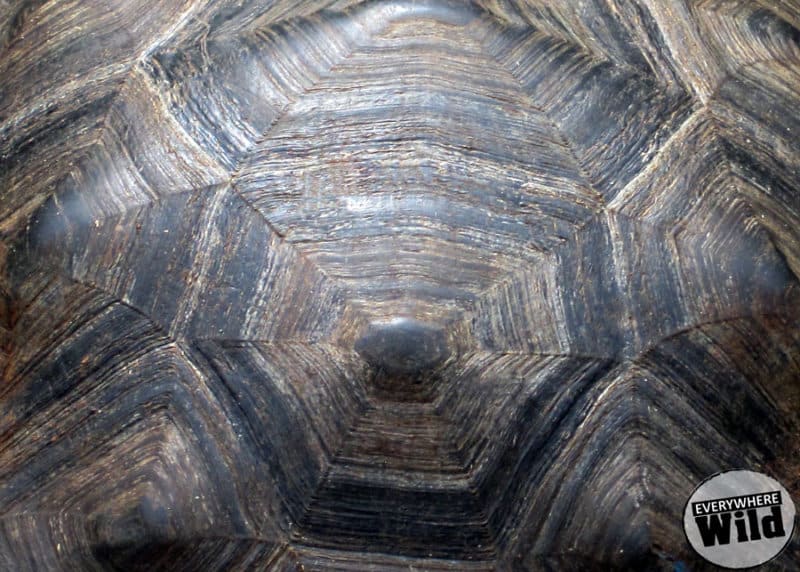
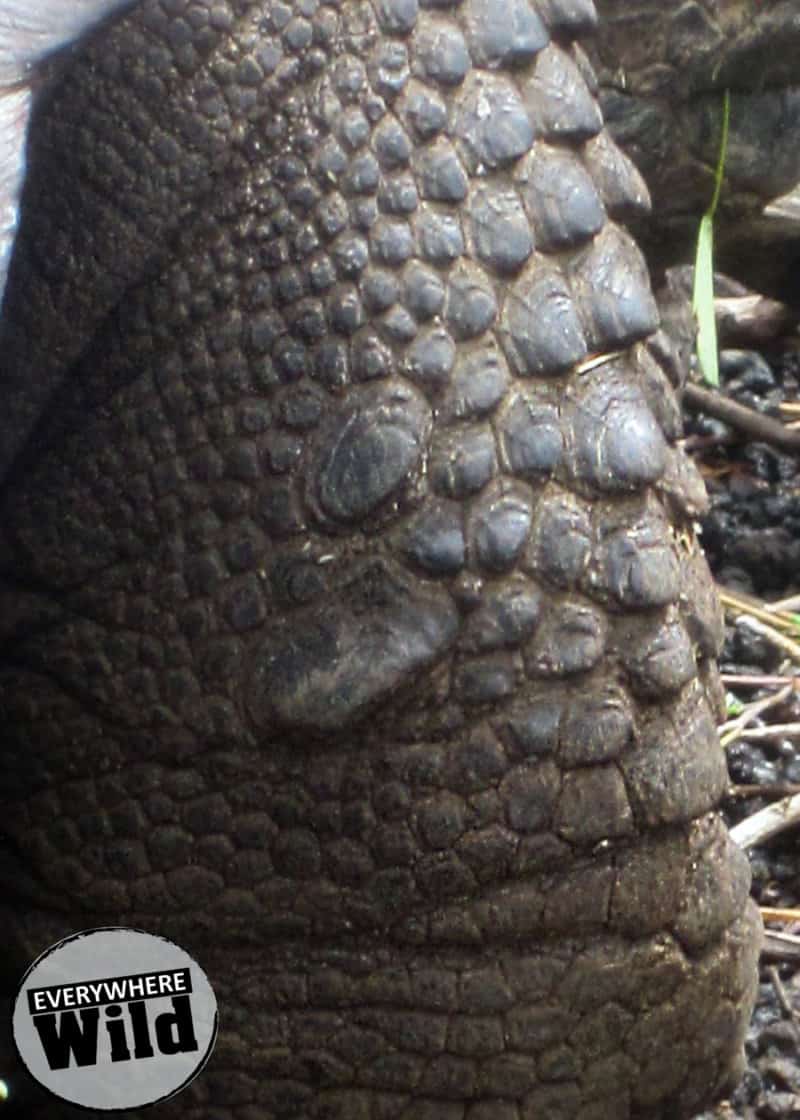 7. Scales and scoots!
7. Scales and scoots!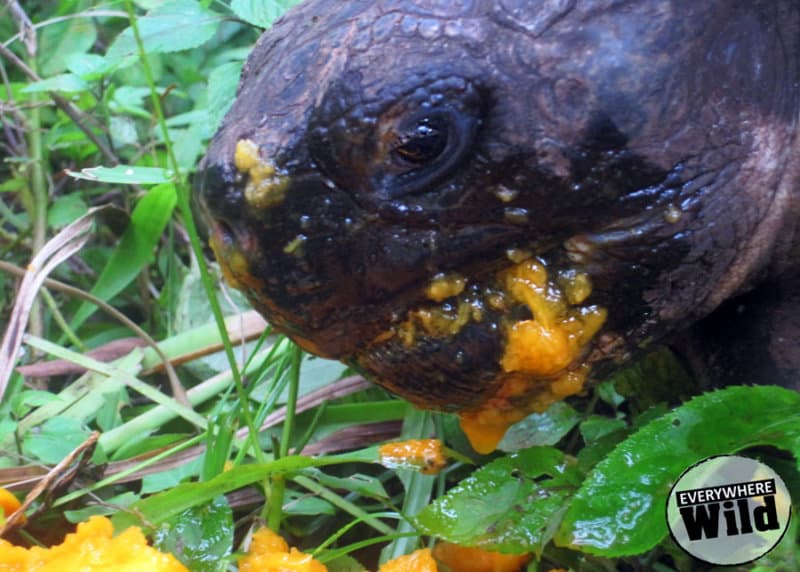
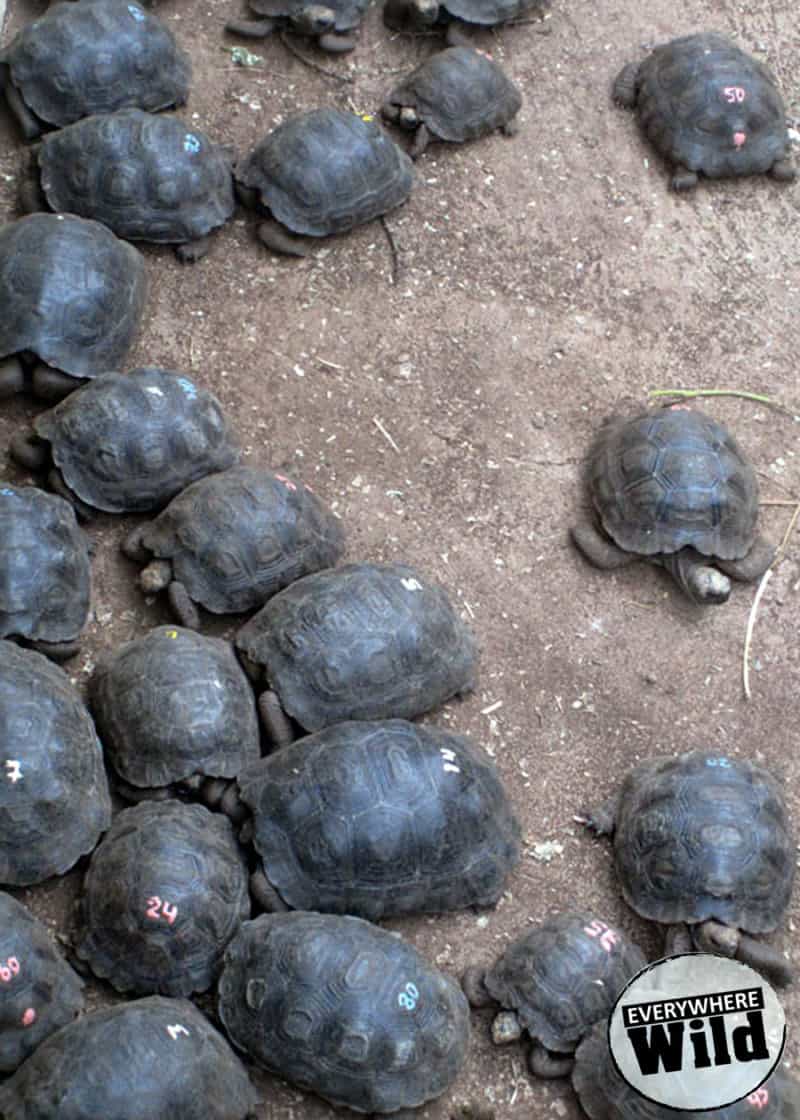
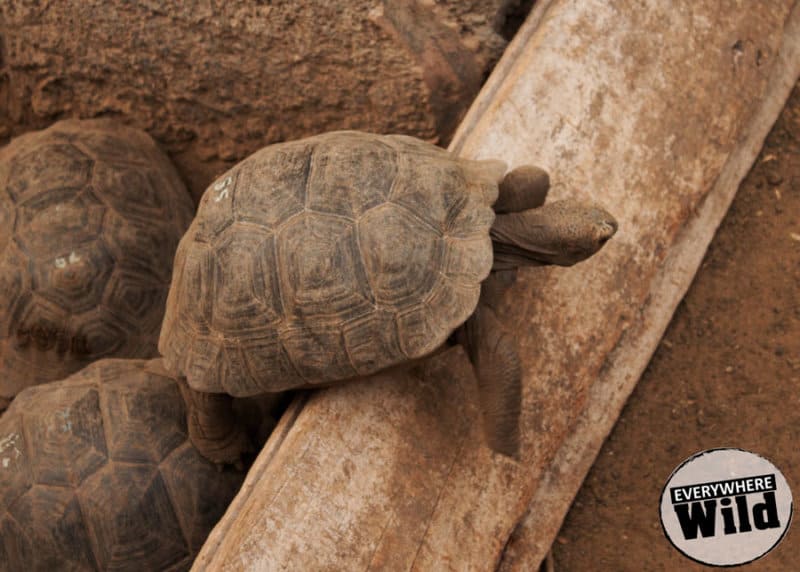

Josh
Monday 19th of April 2021
That is so helpful thank you.
ryan
Tuesday 19th of May 2020
thanks for the info. this is great site :-)
Bob
Tuesday 23rd of April 2019
Hi
Linda Myers
Sunday 3rd of June 2018
I have seen only one photo of a baby tortoise with an adult and your wonderful photo of a large group go young tortoises do the spend and time bring reared by adult male or female tortoises? Also how is it that the deadly additions to the islands :dogs, rats, pigs, cattle and the like continue to be tolerated and not "helped" off the islands? Seems they are in need of a lion, tiger, jaguar or bear (oh my) to assist with the extinctions and then the fierce helpers could be gently placed back in a ships hold and escorted of the island. Just a thought. Thanks for your great help. I look forward to hearing of you leading trips for such groups as Victor Emanul Nature Tours and curating at zoos an museums. Best of luck in your future endeavors.
Drew Haines
Monday 4th of June 2018
Hi Linda, thanks for your comment! To answer your first question, no. Once Galapagos tortoises hatch they are left on their own.
Regarding your second question, it is a big project. Back in 2012, the Ecuadorian authorities introduced some specially designed poison to target the population of rats (check out The Telegraph for the full story). However, because the islands are inhabited by people, it could become complicated if large predators were introduced to the islands. There are active conservation efforts in effect but, unfortunately, these things can take time. Here's a link to the Galapagos Conservancy.
I hope this was helpful!
Jean Mayer
Saturday 29th of July 2017
It mentions that drew was 12 when this was written. Now she is 16. I am wondering if what she wrote was when she was 12 or 16. I love her style of writing, but was she actually writing at 12 or was her father or mother doing the writing for her to get her started? At anyrate, I love her articles, and if she is doing them on her own, more power to her. She is well on her way to being a great writer.
Would like to hear how she is liking being back in Canada? And what are her impressions of it now?
Drew Haines
Wednesday 9th of August 2017
Hi Jean, thanks for your comment! I visited the Galapagos when I was 12, but I wrote this article just a few months ago. I hope this clears up the confusion :). And thank you very much for your compliments! I do enjoy being back in Canada, while I do still miss Ecuador. They are both wonderful, but so different there really is no way to compare them. Thanks again for your comment.